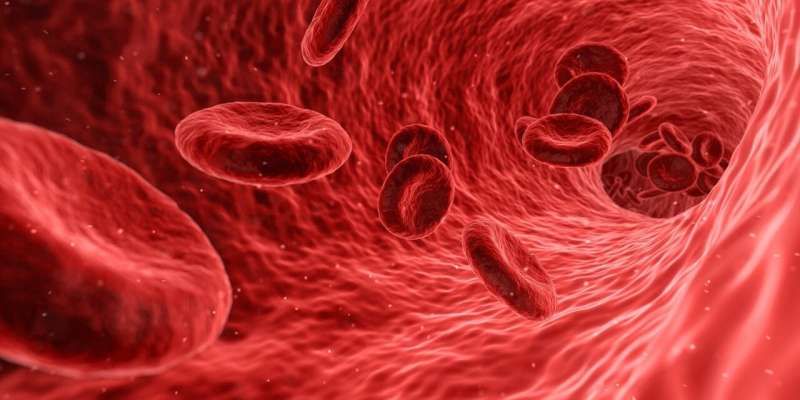Q and A: Does cancer increase my risk for a blood clot?

I am 48 and am being treated for metastatic breast cancer. Despite my diagnosis, I live a fairly normal life, am physically active and strive to optimize my health from a noncancer standpoint. An acquaintance who works in health care advised that I should watch closely for blood clots and be monitored. What is the risk of developing a blood clot, and how can I minimize my chances? How will I know if I have one?
ANSWER: Dealing with a cancer diagnosis is never easy, especially when you have so many potential things to worry about, including side effects from treatments. Discussion around the risk of blood clots often can be overshadowed in patients with cancer because many other issues take priority during office visits.
While blood clots can be dangerous, many strategies can minimize the risk. But it is important to discuss your individualized risk with your health care team.
Blood clotting is a complex, carefully regulated process in the body that prevents life-threatening bleeding when blood vessels are damaged. This becomes a problem when the clotting processes become imbalanced and form inappropriate clots within blood vessels. When this occurs in the vessels that carry blood back to the heart, it is referred to as a deep-vein thrombosis, or DVT. This type of clot is most common in the veins of the legs, but it can occur in any vein in the body.
Occasionally, a deep-vein thrombosis can break loose in the vein where it formed and travel to the vessels of the lungs. This is referred to as a pulmonary embolism, or PE. A pulmonary embolism carries the highest risk for severe illness or death.
Many processes can cause imbalance in the body's blood clotting systems, increasing the risk for deep-vein thrombosis and pulmonary embolism. Among the most common risks is prolonged immobility—often days to weeks of immobility, such as during a hospital stay or after surgery. Additional risk factors include damage to the walls of the blood vessels. This is sometimes caused by a process called atherosclerosis due to diabetes, high blood pressure or smoking, as well as increased production of blood-clotting proteins.
Though some people may have high blood clotting proteins due to a genetic condition, this can occur because of infection, serious illness or other diseases. Cancer is one such condition that causes imbalance in the blood clotting system by increasing the clotting proteins in the blood. Therefore, cancer patients are at increased risk for deep-vein thromboses and pulmonary embolisms, with the degree of risk depending on cancer type and degree of spread in the body.
When a deep-vein thrombosis occurs, it presents most often as swelling of the affected limb with accompanying pain or pressure, redness, and prominence or tenderness of the veins. Occasionally, these symptoms are subtle. In some patients, they may be completely absent. When a deep-vein thrombosis travels and becomes a pulmonary embolism, this can present as shortness of breath, chest pain with breathing, cough or rapid heartbeat.
If you begin to experience any symptoms out of the ordinary, especially emergent issues, it is critical to be evaluated by a health care professional as soon as possible. Call 911 and use emergency services if necessary. It is important to be aware of the symptoms, but it's equally important to realize that these symptoms are not exclusive to blood clotting issues.
The mainstay of blood clot prevention involves maintaining your health, which it sounds like you are already doing. Keep up your activities, as staying active promotes healthy flow through your veins. Also, maintaining a healthy diet and a healthy weight, in addition to avoiding cigarette smoke, promotes the health of the walls of your blood vessels.
If necessary, blood thinning medications, referred to as anticoagulants, also are available by prescription from a health care professional. Careful consideration about the risks and benefits of these medications is necessary, but they are sometimes appropriate to add to the other measures to prevent blood clots. These same anticoagulants are used—sometimes at higher doses—to treat blood clots if they occur.
I always advise patients to talk with their cancer specialist and primary health team to determine the individual risk of developing blood clots and formulate an individualized plan for blood clot prevention. It is also valuable to talk about managing noncancerous medical issues that may contribute to risk.
©2022 Mayo Clinic News Network.
Distributed by Tribune Content Agency, LLC.




















